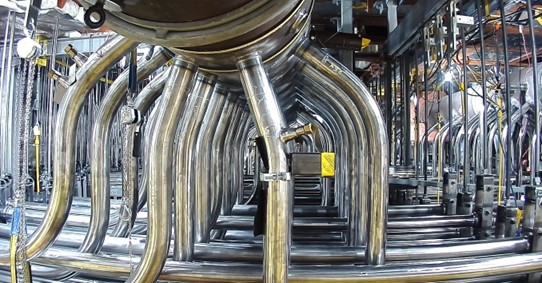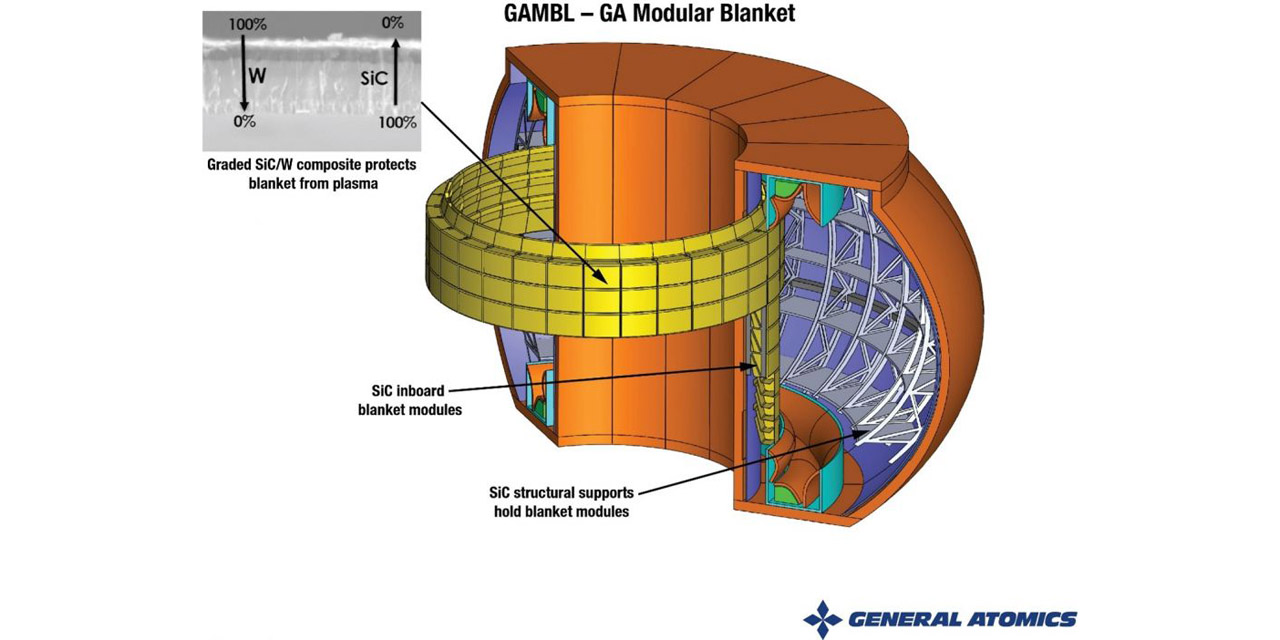Copernicus, TAE’s sixth-generation fusion reactor. (Image: TAE)
California-based TAE Technologies has announced that its accomplishments with its fifth-generation fusion research reactor, Norman, have allowed it to secure sufficient strategic and institutional investments to fund the construction of its sixth-generation research reactor, Copernicus.
John Wagner, director of Idaho National Laboratory and president of Batelle Energy Alliance, delivered the keynote address at the 26th Annual Nuclear Generator & Supplier Executive Summit. (Photo: USA)
The 26th Annual Nuclear Generator and Supplier Executive Summit, hosted by Utilities Service Alliance (USA), was held at the Coeur d’Alene Golf and Spa Resort in Idaho from June 28 through July 1. About 375 attendees were present for this year’s meeting, themed “Nuclear’s Next Wave” which featured presentations and discussions on emerging nuclear technologies and designs, as well as an integrated tradeshow with about 50 industry suppliers exhibiting products, services, and ideas.
The Bruce plant’s Unit 6 upper feeder cabinet. (Photo: Bruce Power)
As part of its “Made in Ontario” strategy announced last year, Bruce Power has awarded a contract valued at C$130 million (about US$100.8 million) to BWXT Canada in support of the ongoing major component replacement (MCR) project at the utility’s eight-unit Bruce nuclear plant.
Energy Northwest’s Columbia Generating Station, in Richland, Wash. (Photo: Energy Northwest)
Energy Northwest, owner and operator of Columbia Generating Station in Richland, Wash., recently signed a memorandum of understanding with nuclear technology firm Curio Solutions regarding Curio’s NuCycle nuclear waste recycling process.
Columbia is the Northwest’s only operating nuclear power plant, consisting of one 1,207-MWe boiling water reactor. There are currently 54 concrete and steel casks on site, holding the spent fuel produced by the reactor since it began commercial operation in 1984.
Darlington's refurbishment to be aided by Green Bond Framework funds. (Photo: OPG)
Ontario Power Generation has updated its Green Bond Framework to include nuclear energy in recognition of the role the technology stands to play in helping the company reach its decarbonization goals. (OPG’s climate change plan, established in 2020, commits the firm to achieving net-zero carbon emission status by 2040.)
The green bonds issued by the utility and its subsidiaries are used to finance and/or refinance certain energy projects and support the development of clean technologies.
A screenshot taken from a INL video demonstrating MAGNET and its digital twin. (Source: INL)
Researchers at Idaho National Laboratory (INL) recently performed their first digital twin test of the Microreactor Agile Non-nuclear Experimental Testbed (MAGNET) and captured the demonstration in a video posted July 14. The digital twin—a virtual representation of a microreactor—was built using advancements in remote monitoring, autonomous control, and predictive capabilities that could help lower operating costs of microreactor technologies and enhance their safety.
Rep. Jamaal Bowman during a hearing of the House Science, Space, and Technology Subcommittee on Energy.
The House Science, Space, and Technology Subcommittee on Energy held a hearing last week to evaluate the Department of Energy’s approach to research and development on new strategies and technologies to support the nuclear waste cleanup mission of its Office of Environmental Management (EM).
A plaque honoring JET’s world record–setting achievement of fusion energy production of 50 megajoules in a single shot (right) and commemorating a 34-year-old bet between Goldston (top left) and Jacquinot (bottom left). (Photo: PPPL and EUROfusion consortium/collage by Kiran Sudarsanan)
A wager struck by two plasma physicists 34 years ago was finally fulfilled in June during the opening day of the 48th European Physical Society Division of Plasma Physics, when Robert Goldston, former director of the Department of Energy’s Princeton Plasma Physics Laboratory (PPPL), virtually presented a plaque to his friend and colleague Jean Jacquinot, former director of the Joint European Torus (JET), EUROfusion's flagship fusion experiment based at the Culham Centre for Fusion Energy in the United Kingdom. Their bet, and JET’s record-breaking achievements in 2021, were celebrated in an article published by PPPL on July 8.
Artist's rendering of Shin-Hanul Units 3 and 4. (Image: KHNP)
South Korea’s new president, Yoon Suk-yeol, appears to be following through on his campaign pledge to reverse the previous administration’s domestic nuclear phaseout plan. Earlier this month, Yoon’s Ministry of Trade, Industry, and Energy announced a new direction for the nation’s energy policy—one that calls for, among other things, a reembrace of nuclear power. A further announcement on the subject last week provided additional details.
A view of Palo Verde-3 and a spray pond, as seen from Unit 2. (Photo: APS)
In the western part of Michigan, where I grew up and spent the early part of my career, water availability was rarely a concern or a topic that might appear in the news. Lake Michigan was a plentiful source of water, and Mother Nature always provided plenty of precipitation to keep things green. If anything, sometimes folks wished it would stop raining! So it was quite a big change in environment when in 2008 my career took me to the desert of Arizona and the Palo Verde Generating Station, with annual regional rainfall totals of three inches in a good year.
This fusion tokamak cutaway illustrates how the GAMBL concept would be incorporated into a fusion pilot plant. The SiC-tungsten composite wall provides superior heat-removal capabilities and durability, and a modular approach enables fabrication using existing technologies. (Image: GA)
Researchers at General Atomics (GA) are proposing a breeding blanket made of modular silicon carbide–based components to withstand the intense conditions in a high-power fusion power plant. The GA modular blanket (GAMBL) concept is described in an article published this month in the journal Fusion Engineering and Design, and was introduced by GA in a July 13 press release.
Artist’s rendering of a Rolls-Royce SMR plant. (Image: Rolls-Royce SMR)
U.K.-based reactor developer Rolls-Royce SMR last week announced a list of six potential sites for its first small modular reactor factory. According to the company's announcement, the factory—the largest and most complex of three such facilities envisioned by the company—will manufacture the SMR vessels.
Rendering of a VOYGR plant. (Image: NuScale)
NuScale Power and Paragon Energy Solutions have signed a patent license agreement that will make NuScale’s Nuclear Regulatory Commission–approved reactor protection system architecture available to the broader nuclear industry, the two companies announced on July 12.
Known as the Highly Integrated Protection System (HIPS) platform, the system was developed by NuScale and Rock Creek Innovations (RCI), a hardware supplier of commercial nuclear protections systems, over six years of collaboration that began in 2010. Paragon, a supplier of safety-related parts and components, acquired RCI in December 2021.
A construction permit was issued for the first of four proposed reactors at Egypt’s El Dabaa site, about 185 miles northwest of Cairo. (Image: Wikipedia)
The Egyptian Nuclear and Radiological Regulation Authority (ENRRA) recently issued the construction permit for the first of four proposed Russian-designed and -supplied reactors at Egypt’s El Dabaa site, located on the Arab nation’s Mediterranean coast, about 185 miles northwest of Cairo.
An application for the permit was submitted by Egypt’s Nuclear Power Plants Authority (NPPA)—the public entity charged with operating the plant—in June of last year.


















.jpg)

